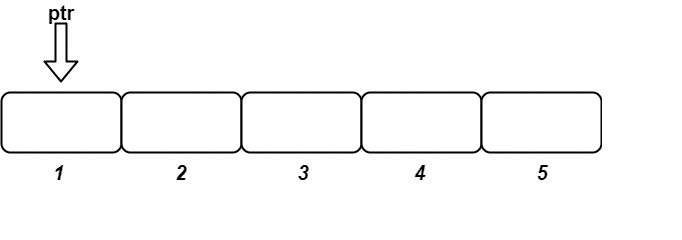- {x}
- Sell Diminishing-Valued Colored Balls
- Create Sorted Array through Instructions
- Lowest Common Ancestor of a Binary Tree III
- Hopper Company Queries III
- Defuse the Bomb
- Minimum Deletions to Make String Balanced
- Minimum Jumps to Reach Home
- Distribute Repeating Integers
- Design an Ordered Stream
- Determine if Two Strings Are Close
- Minimum Operations to Reduce X to Zero
- Maximize Grid Happiness
- Correct a Binary Tree
- Average Time of Process per Machine
- Check If Two String Arrays are Equivalent
- Smallest String With A Given Numeric Value
- Ways to Make a Fair Array
- Read More...

Design an Ordered Stream
There is a stream of n (idKey, value) pairs arriving in an arbitrary order, where idKey is an integer between 1 and n and value is a string. No two pairs have the same id.
Design a stream that returns the values in increasing order of their IDs by returning a chunk (list) of values after each insertion. The concatenation of all the chunks should result in a list of the sorted values.
Implement the OrderedStream class:
OrderedStream(int n)Constructs the stream to takenvalues.String[] insert(int idKey, String value)Inserts the pair(idKey, value)into the stream, then returns the largest possible chunk of currently inserted values that appear next in the order.
Example:

Input ["OrderedStream", "insert", "insert", "insert", "insert", "insert"] [[5], [3, "ccccc"], [1, "aaaaa"], [2, "bbbbb"], [5, "eeeee"], [4, "ddddd"]] Output [null, [], ["aaaaa"], ["bbbbb", "ccccc"], [], ["ddddd", "eeeee"]] Explanation // Note that the values ordered by ID is ["aaaaa", "bbbbb", "ccccc", "ddddd", "eeeee"]. OrderedStream os = new OrderedStream(5); os.insert(3, "ccccc"); // Inserts (3, "ccccc"), returns []. os.insert(1, "aaaaa"); // Inserts (1, "aaaaa"), returns ["aaaaa"]. os.insert(2, "bbbbb"); // Inserts (2, "bbbbb"), returns ["bbbbb", "ccccc"]. os.insert(5, "eeeee"); // Inserts (5, "eeeee"), returns []. os.insert(4, "ddddd"); // Inserts (4, "ddddd"), returns ["ddddd", "eeeee"]. // Concatentating all the chunks returned: // [] + ["aaaaa"] + ["bbbbb", "ccccc"] + [] + ["ddddd", "eeeee"] = ["aaaaa", "bbbbb", "ccccc", "ddddd", "eeeee"] // The resulting order is the same as the order above.
Constraints:
1 <= n <= 10001 <= id <= nvalue.length == 5valueconsists only of lowercase letters.- Each call to
insertwill have a uniqueid. - Exactly
ncalls will be made toinsert.
Solution Explanation:
This problem involves designing an OrderedStream class that efficiently inserts (id, value) pairs and returns chunks of values in increasing order of their IDs. The solution uses an array to store the values, indexed by their IDs. A pointer tracks the next expected ID.
Approach:
-
Constructor: The constructor initializes an array (
dataorvals) of sizen(the maximum ID) to store the values. It also initializes a pointer (ptr) to 0, representing the index of the next expected ID. Elements are initialized tonullor an empty string, indicating that no value has been inserted yet for that ID. -
Insert Function: The
insertfunction takes anidKeyand avalueas input.- It first inserts the
valueinto thedataarray at the indexidKey - 1(since IDs are 1-based). - It then creates an empty list or vector (
ans) to store the chunk of values to be returned. - It enters a
whileloop that continues as long as the pointerptris within the bounds of the array and the element atdata[ptr]is notnull(or empty string). This condition ensures that there's a value at the expected next ID. - Inside the loop, it appends the value at
data[ptr]to theanslist and increments the pointerptr. - Finally, it returns the
anslist, which contains the chunk of consecutively inserted values.
- It first inserts the
Time and Space Complexity:
-
Time Complexity:
- The
insertfunction has a time complexity of O(n) in the worst case, where n is the number of elements in the array. This worst-case scenario occurs when all the elements fromptrto the end of the array have been inserted. However, in most cases, the time complexity is closer to O(k), where k is the length of the chunk returned. This is because the while loop will only iterate through the already inserted elements. - The Constructor has O(n) time complexity because it initializes an array of size n.
- The
-
Space Complexity:
- The space complexity is O(n) because an array of size
nis used to store the values. This space is used regardless of the number of insertions; it's determined by the inputn.
- The space complexity is O(n) because an array of size
Code Examples (with minor stylistic improvements):
The provided code examples in Python, Java, C++, Go, TypeScript, and Rust are all functionally correct and implement the described approach. They differ slightly in syntax and style, but the core logic remains the same. For clarity and conciseness, I won't repeat them here. Refer to the original response for the complete code snippets in each language.